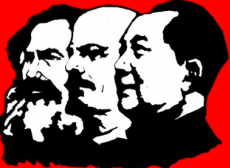
Email: lienaaltai@icloud.com
Total Article : 47
About Me:Sixth form student with an interest in a wide variety of topics such as languages, history, philosophy, politics and literature

Following the formation of the Soviet Union, many attempted to recreate this workers’ state. China had its own revolution in the late 1940’s, and created a new government with Mao Zedong in power. Whilst many western historians view Mao as a monster and mass murderer, he is also praised for helping hundreds of millions out of poverty, breaking the cycle of underdevelopment, uniting China as a country and helping china to be the economic and scientific powerhouse that it is today. At this point, it becomes difficult to work out whether to praise, or condemn the emerging communist nations. Following China came the Cuban revolution with Fidel Castro as its leader. Following the struggle against the Batista regime, Fidel Castro created a new Cuba with free, high quality healthcare, high literacy rates, free education, and women’s rights. The list of ways in which communism benefited Cuba continues, yet, the leader is often slandered.
There were also issues with the new communist governments, including lack of democracy in their governments. Often, the governments became distant from the people, which lead to disagreements and tensions. There were also many disputes as to what would define communism. Whilst Lenin emphasised the revolutionary aspect of communism, Trotsky argued the internationalism of communism and thought that it shouldn’t necessarily begin first in Russia. Stalin made Trotsky leave the Soviet Union in 1928, and Trotsky was subsequently killed in 1940. However, by the 1960’s, one third of the world had overthrown the capitalist governments. During the period described as the Cold War, an increasingly clear divide and rivalry emerged between communism and capitalism. The western fear of communism is still prominent to this day, and can be experienced from political cabinets to history classrooms. Communism is often slandered and criticised, forgetting the atrocities caused by capitalism.
By the end of the cold war in 1989, the vast majority of the world returned to capitalist regime. as the soviet union dissipated in 1991, the power of communism decreased. However, communist countries are still dotted around the world, including Cuba, North Korea, Laos, Latin America and South Africa.
The word 'communism' itself is ambiguous to this day. Whilst many label themselves communist, the sub-genres of communism allow for more specific labelling. Many who think of themselves as communist may be more 'reformist', supporting slow change and reform rather than revolution and momentous overthrowing of the current government. The term 'socialism' is also used commonly, although many political groups labelling themselves 'socialist' are far from the original socialist ideas.
Communism, though criticised, praised, rejected or loved, remains an incredibly powerful ideology. The mark of communism is ingrained and permanent, even in countries reclaimed by capitalist rule. Communist architecture stands strong, representing the power and glory of the communist state, whilst the symbolic colours of red and yellow are objectively known as communist. Whether one rejects this ideology is a personal choice, yet one must be wary of propaganda. What we learn in the classrooms is not always impartial, and can be tainted by years of fear of communism. Many believe that society needs to change. What many don’t consider is the means by which we achieve this change. Perhaps what we need is a revolution.

0 Comment:
Be the first one to comment on this article.